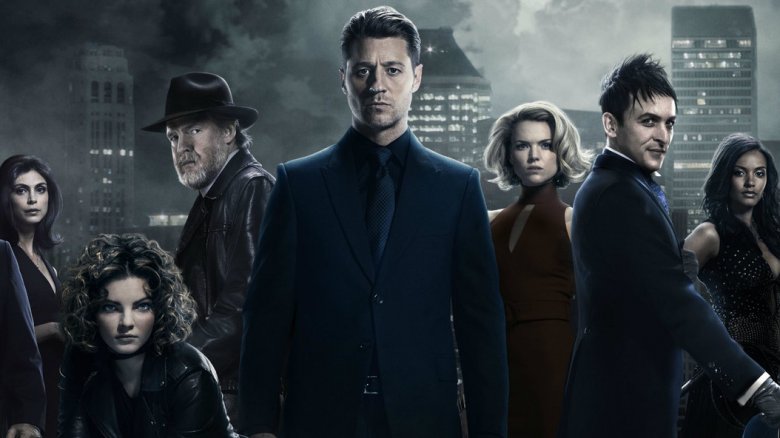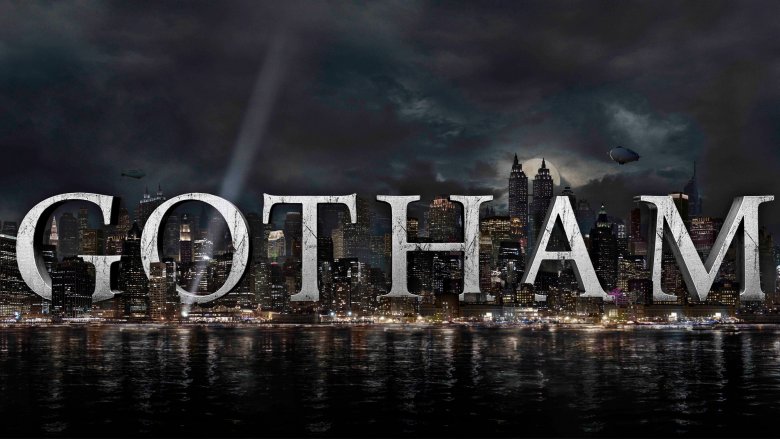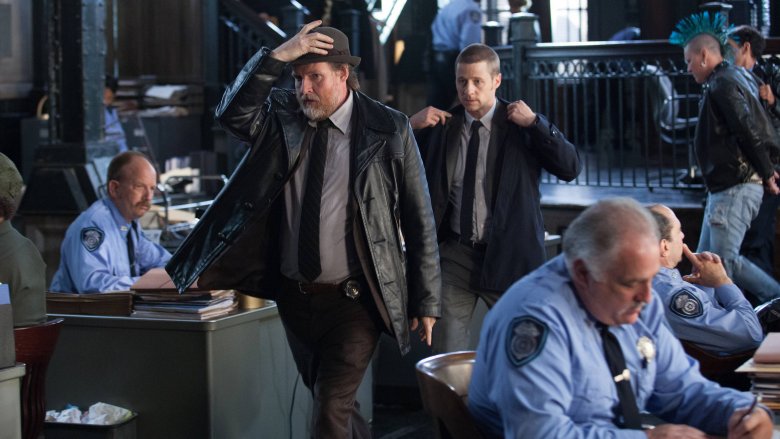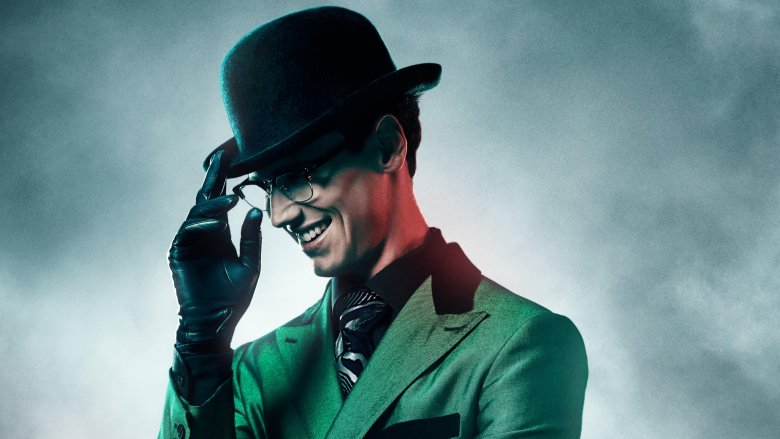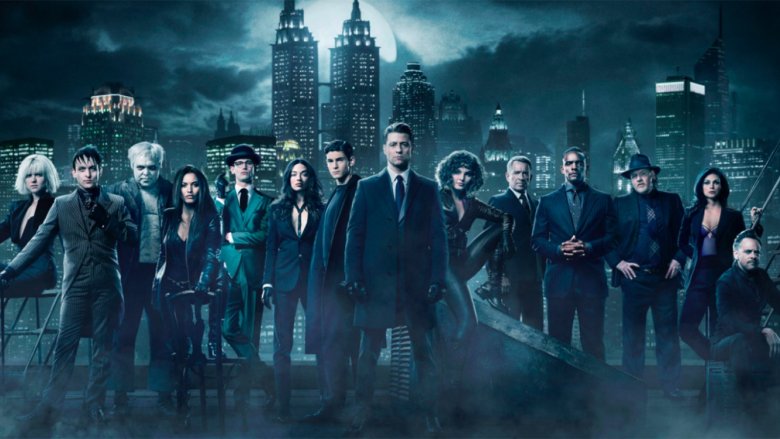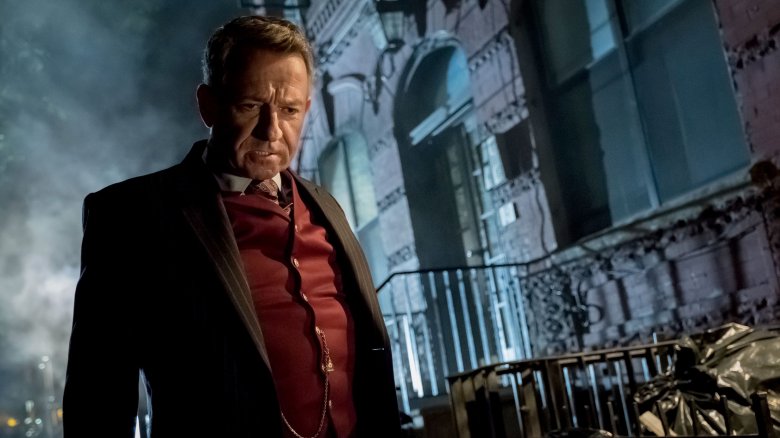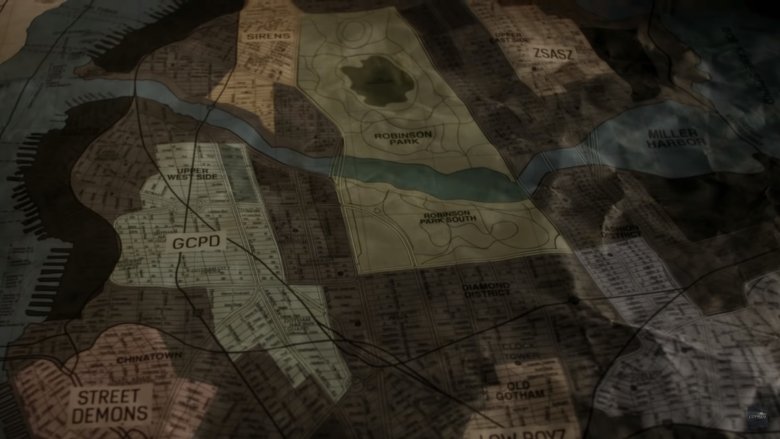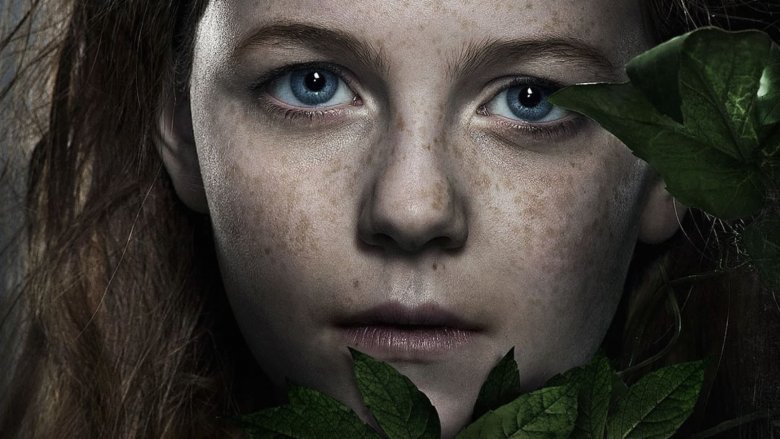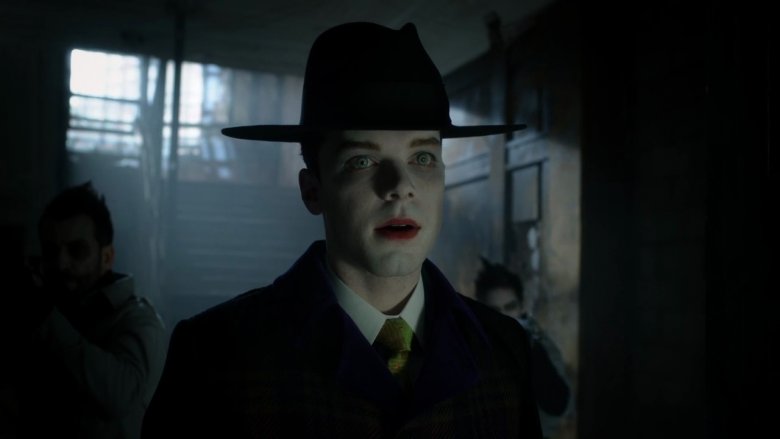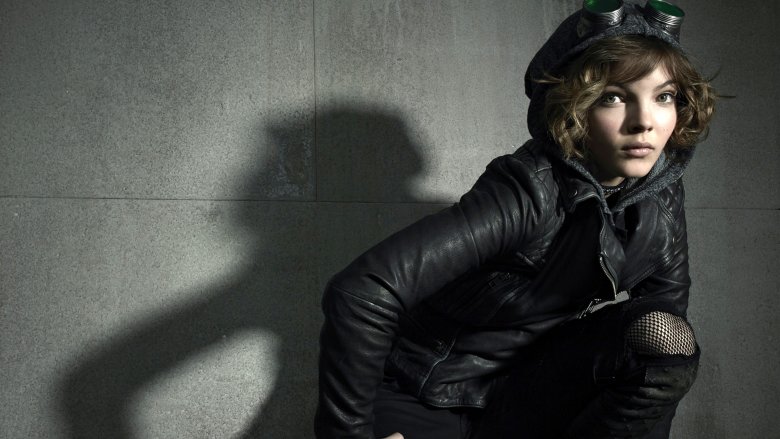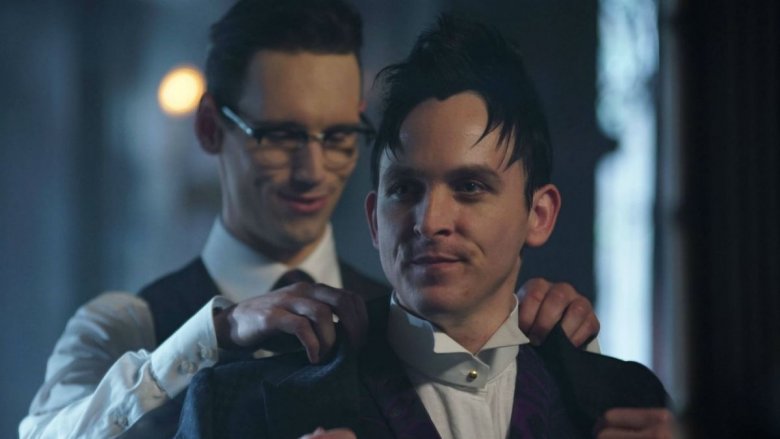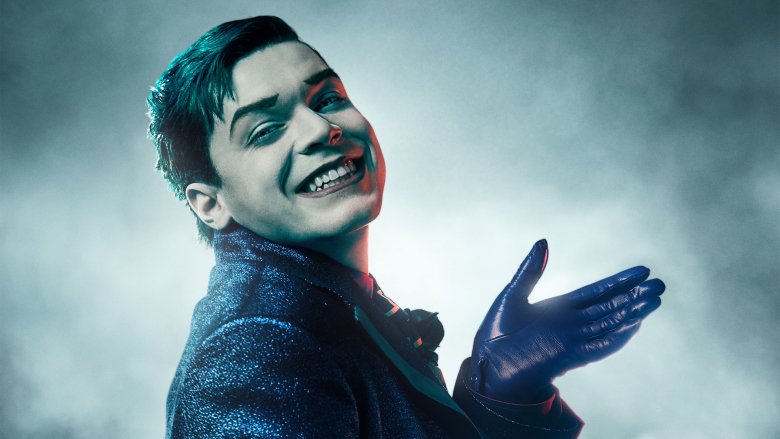Things Gotham Does Better Than The Dark Knight Trilogy
DC is catching up to Marvel when it comes to crafting an extended universe with a myriad a stories ripped straight from the comics. Before this new era of TV shows, crossover films, and cartoons, Batman got the lion's share of screen time compared to other DC heroes. Even Superman was forgotten in the days that DC ruled the silver screen with The Dark Knight trilogy.
These films tell the story of a very specific take on Bruce Wayne, and a certain kind of Gotham City. The movies have a reputation for being a grim, gritty look at the reality of vigilantism, claiming that the world isn't actually so accepting of caped crusaders after all. Director Christopher Nolan's series does a great job of showing this, but neglects some details of the larger universe in order to tell a succinct story.
Gotham, set long before Bruce Wayne dons the pointy-eared cowl, fills in all the gaps and fleshes out details big and small that contribute to the world that Batman inhabits. As much as we love The Dark Knight trilogy, there are plenty of ways the films fail where the show succeeds.
It's Gotham, not New York
As should be expected, the show Gotham is about Gotham and all that its name implies. The Dark Knight movies are so focused in on Batman and the baddies he faces that the city itself sometimes takes a backseat. In the films, Gotham is almost indistinguishable from real-world American cities like Chicago (where much of Nolan's trilogy was filmed) or New York. Come to think of it, other than the Daily Planet, what differentiates Metropolis?
The austere skyscrapers and foggy streets of Gotham City take design inspiration from both Chicago and New York City. NYC itself is sometimes called "Gotham," a nickname popular in the 19th century, but the fictional Gotham City is located in New Jersey. Watch a couple episodes of Gotham and you'll know that Gotham City is much more than just a fictionalized New York — the streets are dirty and the people hardened from lives of crime and hardship. The show gives viewers a tour through specific neighborhoods like the Narrows, where, according to Harvey Bullock, "the poorest of the poor" and "the hardest of the hard" gather. The series has more time than a movie does to lay out the city, show its shabby corners, and explore the opulence that the Waynes once enjoyed, as opposed to the few shots of underworld hideouts and high society dinner parties we get in The Dark Knight.
Gotham shows how corrupt Gotham really is
Don't trust the system. This is the message we get from watching just about anything with Batman in it. Bruce takes it upon himself to mete out justice because Gotham City and its corrupt system can't be expected to. Gotham has been ruled by crime for decades, with families like the Falcones pulling the strings through illicit deals forged from greed and blackmail. Even the police, who are meant to enforce the law and keep the peace, are only human and thus able to be manipulated. Hard times mean hard decisions, and it certainly doesn't help that Gotham is in a perpetual state of economic depression.
We get a taste of this in Batman Begins, with the corruption in Arkham Asylum, but Gotham absolutely festers in corruption. Through the eyes of a young and idealistic James Gordon, we get a first-person perspective of the way cops can be compromised with the promise of cash. The officers he works with are wont to take bribes from criminals like the Penguin in order to make ends meet. GCPD also has a long history of police brutality. You might not know any of this from a cursory viewing of Christopher Nolan's films.
Gotham is ripped straight from the comics
Batman first appeared in the pages of comics in 1939 and has since had an incredible history of adventures, a ridiculous number of enemies, and a considerable collection of allies. With such a long legacy, it's hard to choose what stories can be best translated onto the silver screen. Christopher Nolan cherry picked a handful of Batman lore and wove the stories together into an Academy Award-winning trilogy. He had to leave out a lot of well-loved threads in order to get his Gotham to be the grittiest possible.
The show Gotham draws a ton of inspiration from the comics, not forced to be so choosy with source material. The nature of the TV series allows for some of the more whimsical plotlines to be brought to life alongside the darker story beats. In Gotham, the Riddler can clown around alongside the Joker. The costumes can get a little campy, too, just like the comics. Penguin is hook-nosed and waddles. The Riddler favors green suits and bowler hats. In the show, the characters are closer to their comic counterparts in representation, and die hard fans of the comics can expect some of their favorite scenes to be brought to life.
More characters means more mayhem (and that's a good thing)
Gotham is about more than Bruce Wayne. It's hard to say that The Dark Knight trilogy was all about Bruce Wayne either, however. In the films, it was difficult to separate Bruce Wayne's identity from that of the Batman's. Considering how attached he was to the mask, Bruce Wayne was more of Batman's alternate identity than the other way around. In the TV show, the character that we get to know doesn't yet have bats on the brain.
Gotham's Bruce Wayne is a kid. He has a complicated relationship with Alfred, his caretaker, and a whole lot of pent up emotion. He gets into trouble. He goes down the wrong path. There's even one plotline wherein he embraces his rich kid identity and becomes a snotty snob that goes clubbing with his friends and sasses Alfred. Gotham allows for Bruce Wayne to be more than just Batman — he's an evolving character with more feelings and motivations than pure justice. Gotham, in brief snatches, allows for Bruce Wayne to be a kid and for audiences to get to know the man beneath the mask before he even thinks about putting it on.
We get to know Alfred
Alfred Pennyworth is worth his weight in gold. Let's be real: there would be no Batman without his butler. To begin with, Alfred is so much more than a butler — he is Bruce Wayne's remaining family and constant companion. In the films, Michael Caine does a superb job of being Batman's confidant and aide in fighting crime, as well as someone who genuinely cares about Bruce Wayne and the damage dealt by the mantle of the bat. We were all in tears at the end of The Dark Knight Rises along with poor Alfred.
Alfred in Gotham is a much different man, and we get to know him better. He cares about Bruce and looks out for him, but doesn't tolerate sass. We also get to see that Alfred wasn't always a butler. A former member of the British Special Forces, his training shows itself often. Alfred can sock it to bad guys just as well as any caped crusader can.
Gotham isn't isolated... until it is
Gotham isn't your average city. It's got a bad reputation and even worse criminals. We're surprised that anyone even wants to live there when every other day a splashy new headline announces the latest murder, robbery, or escaped madman. But hey, maybe rent is cheap in those dark high rises. To those who don't call Gotham home, what do they think of a city choked with crime and campy criminals?
In The Dark Knight Rises, we get a hint of what the outside world is like through the quarantine of the city. But even the news reports on a city overrun by Bane and his ilk don't do much to distinguish Gotham from New York. Again, we get a more detailed version of the No Man's Land plot through Gotham. Once the city is in quarantine, we get a play-by-play of how it falls into criminal chaos over the events of a whole year. The show makes Gotham into much more than an isolated city with empty streets. It's a warzone, a kingdom of divided factions, and a backdrop for stories that don't even involve Bane.
Origin stories... lots and lots of origin stories
We love a good origin story. It's fun to see the "before" and "after" of heroes and villains alike. Batman Begins was Batman's origin story, showing how Bruce Wayne became a trained killer who rejected killing with the League of Shadows. Gotham is also Batman's origin story, but more specifically of Bruce Wayne, as he evolves slowly into the man who will become the Dark Knight of Gotham. In the meantime, viewers get to see a myriad of heroes, villains, and chaotic neutral players in the making.
Selina Kyle, like Bruce Wayne, is young and impressionable, but she's slowly growing into a femme fatale day by day. Poison Ivy powers through the process, going from little girl to grown woman to fatal force of nature. Edward Nygma has a metamorphosis of his own, from forensic tech to the quizzical mastermind the Riddler. Butch Gilzean becomes the growling Solomon Grundy through some shady chemical compounds. We even meet a teenage (but no less terrifying) Jonathan Crane, and watch as he fashions himself into the Scarecrow. Gotham, with all its characters, is packed with origin stories. And at the center of it all, we get a close-up look at Bruce Wayne's psyche, rather than just thoughtful shots of him standing in a whirlwind of bats.
Recreating the best of the comics
You know who doesn't have a definite origin story? The Joker. Although the 2019 Joker movie looked to change that, the comics have artfully hedged around the idea of how the Joker came to be the Clown Prince of Crime, villainous to the core. All it takes is one bad day to turn someone from a functioning human being to a depraved maniac, after all. This is the idea behind The Killing Joke, one of the most famous — or infamous, depending on who you talk to — comics in all of Batman history.
Gotham's origin stories typically draw inspiration directly from the comics, and the show's long run has allowed for it to dip into the dark waters around The Killing Joke. In the episode "One Bad Day," Bruce is subjected to watching Alfred get tortured as an attempt by Jeremiah, the show's pseudo-Joker, to turn Bruce Wayne bad. Even when Bruce manages to escape, things go from bad to worse. Selina Kyle is shot in front of him, just as Barbara Gordon was shot by the Joker and tortured in order to torture Jim Gordon. While not the first onscreen incarnation of these brutal scenes, "One Bad Day" still manages to properly portray the horror of The Killing Joke.
Empowering female characters
We have a bone to pick with Christopher Nolan. For all their effective psychological drama and impressive storytelling, the Dark Knight movies don't have a whole lot in the way of nuanced or intriguing portrayals of women. Thankfully, we don't have to be satisfied with Nolan's damsels in distress, fridged love interests, and spandex suits — Gotham has a fantastic array of female representation.
Selina Kyle is a feisty street kid rather than a femme fatale. We still get deadly curves when it comes to Poison Ivy, but we also get to see strong women, weak women, crazy women, and surprisingly balanced women. From police commissioner Sarah Essen to Fish Mooney, from Dr. Lee Thompkins to Nyssa al Ghul, there's a vast variety of women both good and bad, but each and every one is a fully fleshed out character with her own story. Barbara Kean, for instance, is so much more than just Batgirl's mom and Jim Gordon's wife. No one is just a girlfriend. Take note, Nolan.
Everyone gets a character arc
Movies can only give us a taste of the inner lives of the characters within. TV shows have more time to give us the little details and side stories that make up the world of a character and make them who they are. In Gotham, there has been enough time to give ever-evolving plots to seemingly secondary characters like Edward Nygma.
Maybe a little too kooky to be mentioned in the ultra-gritty Dark Knight trilogy, Gotham has no problem telling the tale of a weirdo gone weirder. We watch as Edward Nygma finds his own alter ego, the Riddler, and then unleashes it and all his brilliance. We also get to see his fascinatingly ardent relationship with The Penguin. Heck, Oswald Cobblepot himself seemed like the main character for a while in the second season. We watched as Poison Ivy underwent multiple metamorphoses, and even Solomon Grundy had his own little romance plot. Despite Gotham being jam-packed with characters, each and every one inhabits their own, larger story.
DC, but not gritty
Nolan's films don't have room to be funny. There are plenty of clever lines and witty quips in the Dark Knight trilogy, but Gotham does weird and wonderful better. The show is a better reflection of the sometimes serious, sometimes hilarious tone of the comics. DC doesn't always have to be dark and dour, and Gotham proves it.
To begin with, the show allows the full personalities of Gotham's baddies to shine. Edward Nygma is allowed to speak in riddles and host deadly but dazzling game shows. The Penguin can run for mayor. Fish Mooney can beat Oswald Cobblepot with a chair while yelling about heartbreak. Did you know that Bruce Wayne can smile? He does that sometimes in the show, believe it or not.
Gotham lets its characters emote and embrace the campiest sides of themselves as represented in the comics. The tone allows for strange fashion choices and even stranger characters to be included in the canon with scripts that are more witty than gritty. There are plenty of brutal backstories and dark moments, but there are equal amounts of inside jokes and one-liners.
